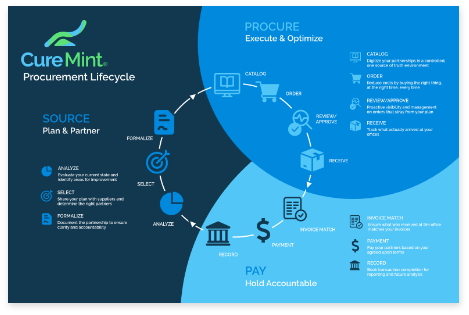At CureMint, we’re committed to driving down costs as we help your dental organization reshape its supply procurement strategy. In this blog series, we’ll guide you through nine easy steps to drive down your dental supply expenses so you can better manage your finances and become more profitable in the dental industry.
In our last post, we went over how to conduct clinical trials, testing out the top contenders for your dental organization’s new formulary to find the products preferred by your clinical staff. This process likely took some time. But remember the old proverb: All things come to those who wait.
If you’ve handpicked a crack team of doctors and provided a reliable infrastructure for testing out the products in question, then the step of evaluating trial results should be relatively easy. Following our advice to the letter up to this point, including all that extra homework from earlier phases, will pay off and relax this part of the process.
However, it may not be painless. There may be a few tough compromises in these next few steps. Still, those impending conflicts are essential to the process and the continuing quality of care offered by your dental offices — not to mention the satisfaction of your clinical staff.
But have no fear. You’ll be saving money regardless, and that’s the point of this series, after all!
STEP SIX: EVALUATE THE TRIAL RESULTS
The first move in this step is to collect the results of the clinical trials from your team. If you followed our advice to the letter, you would have distributed a simple form (like the one in our ebook) to evaluate each product. A straightforward quantitative method such as the five-point scale will make the top picks from evaluations much clearer.
Next, we’re going to ask you to do some simple arithmetic. And you know what’s really great for arranging a set of numbers together? Our old friend, the Excel spreadsheet! Once you’ve collected all the CET evaluations, input all the scores into another designated spreadsheet. Calculate each product’s average score by adding all the scores for each product and dividing them by the number of doctors involved in the trial.
If a product’s trials result in a score of 3 or higher, you should keep them in mind for consolidation into your primary formulary, which we’ll do in Step 7. However, if all products within a category score a two or below, you’ll need to continue with another round of trials, testing out the next best deal.
While rare, your trials may suggest consolidating to an item that doesn’t save your organization money. If reducing supply costs is your #1 priority and you can take no further course of action, avoid this fluke by deepening your analysis of price-per-each values. For example, consider the hypothetical gloves formulary we’ve been using. Your annual organizational spend on gloves in total is $3,976.01 in this situation. If you divide that by gloves ordered — 348,250, to be exact — you end up with $0.0114 per glove. By that standard, any glove costing more than $0.0114 would end up costing your organization more money.
Drawing out this imaginary situation further, let’s say that Gloves Galore returned their RFQ at $0.014 per glove, which is $0.003 cheaper per glove than their original cost. If both Sammie’s Manufactured Gloves and Bob’s Manufactured Gloves score below a three on their trials, your next choice would be to consolidate to Gloves Galore. However, consolidating to Gloves Galore would cost your organization an additional $899.49 annually.
Again, this rarely happens within an organization; if it does, it would be financially beneficial not to trial Gloves Galore and instead leave all three gloves on the formulary and choose not to consolidate this category in this specific case. But, if you can find some room with upfront costs, this is where those side-perks and other benefits we’ve discussed in past iterations of this blog might come into play.
However, it’s more likely that the winners of the clinical trials will be readily apparent by the time you’ve found the average scores. This crème de la crème will soon take its rightful spot in your primary formulary, which we’ll discuss in our next post.
Keep a lookout for Part Seven: Consolidating & Finalizing Your Formularies
Related Blogs
How to Get Started with Dental Spend Management When You Don’t Know Where to Start
09.30.21
For rapidly growing dental service organizations (DSOs), the…
Using Big Data to Lower Dental Supply Costs
09.28.21
As the dental market surpasses $150 billion and private…
Not All Dental Costs Are Equal: Which One Are You Focusing On?
09.27.21
It doesn’t matter whether you’re whitening teeth or selling…





